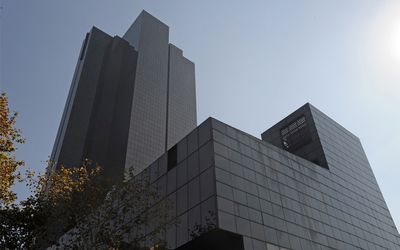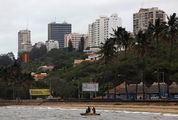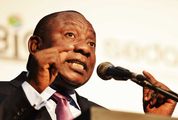THE South African Reserve Bank’s monetary policy committee (MPC) has not made itself popular with Thursday’s surprise decision to hike rates 25 basis points — the second this year.
Consumers, especially heavily indebted ones, will be feeling sore going into the Christmas shopping season. Economists too might be unhappy, especially those who changed their predictions over the past week or so from a hike to a hold.
But monetary policy was never supposed to be easy. If it were, we wouldn’t need six experts meeting for three days just to decide on a quarter of a percentage point increase in the benchmark interest rate. And the MPC’s chairman, Reserve Bank governor Lesetja Kganyago, has been consistent in his message that the Bank was concerned about the risks to the inflation outlook.
And whereas some in the market have already priced in a hike by the US Federal Reserve next month, Mr Kganyago had been communicating clearly that the Bank didn’t share that view. He repeated on Thursday that the Bank expected a Fed hike to result in capital outflows from emerging markets and a possibly exaggerated depreciation of emerging market currencies, the rand included.
The Bank, certainly, is anticipating volatility around the Fed meeting on December 16. Fed minutes released this week indicate that liftoff on rates is pretty certain. A key issue for the rand and emerging market currencies will be not only what the Fed does but what it says it is going to do in months to come.
The MPC’s decision to hike rates won’t necessarily give support to the rand, nor is it meant to. But it will help to underline the credibility and consistency of South African monetary policy at a vulnerable time for the currency.
It sends a firm signal too, as it is meant to, that the Bank is committed to curbing any inflationary pressure that might arise out of a crash, or even a mild wobble, in the rand.
Some in the markets seemed to be swayed ahead of the meeting by relatively benign consumer price inflation numbers and by the decline in the oil price to below $45. That could help in the short term. But as the members of the MPC emphasised yesterday, they have to look ahead to the 12-to 24-month timeframe in making their decisions, because that is the period in which interest rates have their effect.
Looking ahead, the inflation picture is slightly better in some respects, worse in others. The MPC still expects two breaches of the inflation target next year. Perhaps more to the point, it is quite a lot more worried than it was before about the upside risks to inflation. The rand, drought and higher electricity tariffs are the big risks after Eskom applied to the energy regulator for a clawback of almost R23bn in revenue.
Weighed against these considerations are the risks to growth, which have also worsened, making the MPC’s fine balancing act harder than ever this time around.
The Bank now expects the economy to grow only 1.4% this year and 1.5% next year, jumping to a still rather weak 2.1% in 2017.
That is a downbeat scenario for SA. And it is right to be concerned about how much an interest rate hike would depress that picture.
Strikingly, the MPC disclosed on Thursday that its models show that a one percentage point hike damps growth by 0.4percentage points, so a 25basis point hike has a negative effect of just 0.1percentage point on the growth rate.
That could make a dismal time worse.
But so too could runaway inflation. The MPC decided the inflation risk outweighed the growth risk this time.
There will be criticism, which would be legitimate. But tough decisions don’t come easily. Therefore, the MPC’s resolve is to be commended, as is the firm signal it has sent.

The Reserve Bank in Pretoria. Picture: FINANCIAL MAIL
THE South African Reserve Bank’s monetary policy committee (MPC) has not made itself popular with Thursday’s surprise decision to hike rates 25 basis points — the second this year.
Consumers, especially heavily indebted ones, will be feeling sore going into the Christmas shopping season. Economists too might be unhappy, especially those who changed their predictions over the past week or so from a hike to a hold.
But monetary policy was never supposed to be easy. If it were, we wouldn’t need six experts meeting for three days just to decide on a quarter of a percentage point increase in the benchmark interest rate. And the MPC’s chairman, Reserve Bank governor Lesetja Kganyago, has been consistent in his message that the Bank was concerned about the risks to the inflation outlook.
And whereas some in the market have already priced in a hike by the US Federal Reserve next month, Mr Kganyago had been communicating clearly that the Bank didn’t share that view. He repeated on Thursday that the Bank expected a Fed hike to result in capital outflows from emerging markets and a possibly exaggerated depreciation of emerging market currencies, the rand included.
The Bank, certainly, is anticipating volatility around the Fed meeting on December 16. Fed minutes released this week indicate that liftoff on rates is pretty certain. A key issue for the rand and emerging market currencies will be not only what the Fed does but what it says it is going to do in months to come.
The MPC’s decision to hike rates won’t necessarily give support to the rand, nor is it meant to. But it will help to underline the credibility and consistency of South African monetary policy at a vulnerable time for the currency.
It sends a firm signal too, as it is meant to, that the Bank is committed to curbing any inflationary pressure that might arise out of a crash, or even a mild wobble, in the rand.
Some in the markets seemed to be swayed ahead of the meeting by relatively benign consumer price inflation numbers and by the decline in the oil price to below $45. That could help in the short term. But as the members of the MPC emphasised yesterday, they have to look ahead to the 12-to 24-month timeframe in making their decisions, because that is the period in which interest rates have their effect.
Looking ahead, the inflation picture is slightly better in some respects, worse in others. The MPC still expects two breaches of the inflation target next year. Perhaps more to the point, it is quite a lot more worried than it was before about the upside risks to inflation. The rand, drought and higher electricity tariffs are the big risks after Eskom applied to the energy regulator for a clawback of almost R23bn in revenue.
Weighed against these considerations are the risks to growth, which have also worsened, making the MPC’s fine balancing act harder than ever this time around.
The Bank now expects the economy to grow only 1.4% this year and 1.5% next year, jumping to a still rather weak 2.1% in 2017.
That is a downbeat scenario for SA. And it is right to be concerned about how much an interest rate hike would depress that picture.
Strikingly, the MPC disclosed on Thursday that its models show that a one percentage point hike damps growth by 0.4percentage points, so a 25basis point hike has a negative effect of just 0.1percentage point on the growth rate.
That could make a dismal time worse.
But so too could runaway inflation. The MPC decided the inflation risk outweighed the growth risk this time.
There will be criticism, which would be legitimate. But tough decisions don’t come easily. Therefore, the MPC’s resolve is to be commended, as is the firm signal it has sent.




















Change: 1.37%
Change: 1.32%
Change: 2.91%
Change: 0.45%
Change: 3.09%
Data supplied by Profile Data
Change: 1.63%
Change: 0.83%
Change: 1.37%
Change: 0.00%
Change: 0.69%
Data supplied by Profile Data
Change: -2.04%
Change: -1.78%
Change: -1.55%
Change: -1.86%
Change: -1.48%
Data supplied by Profile Data
Change: -1.19%
Change: 0.31%
Change: -0.65%
Change: -1.39%
Change: 2.92%
Data supplied by Profile Data